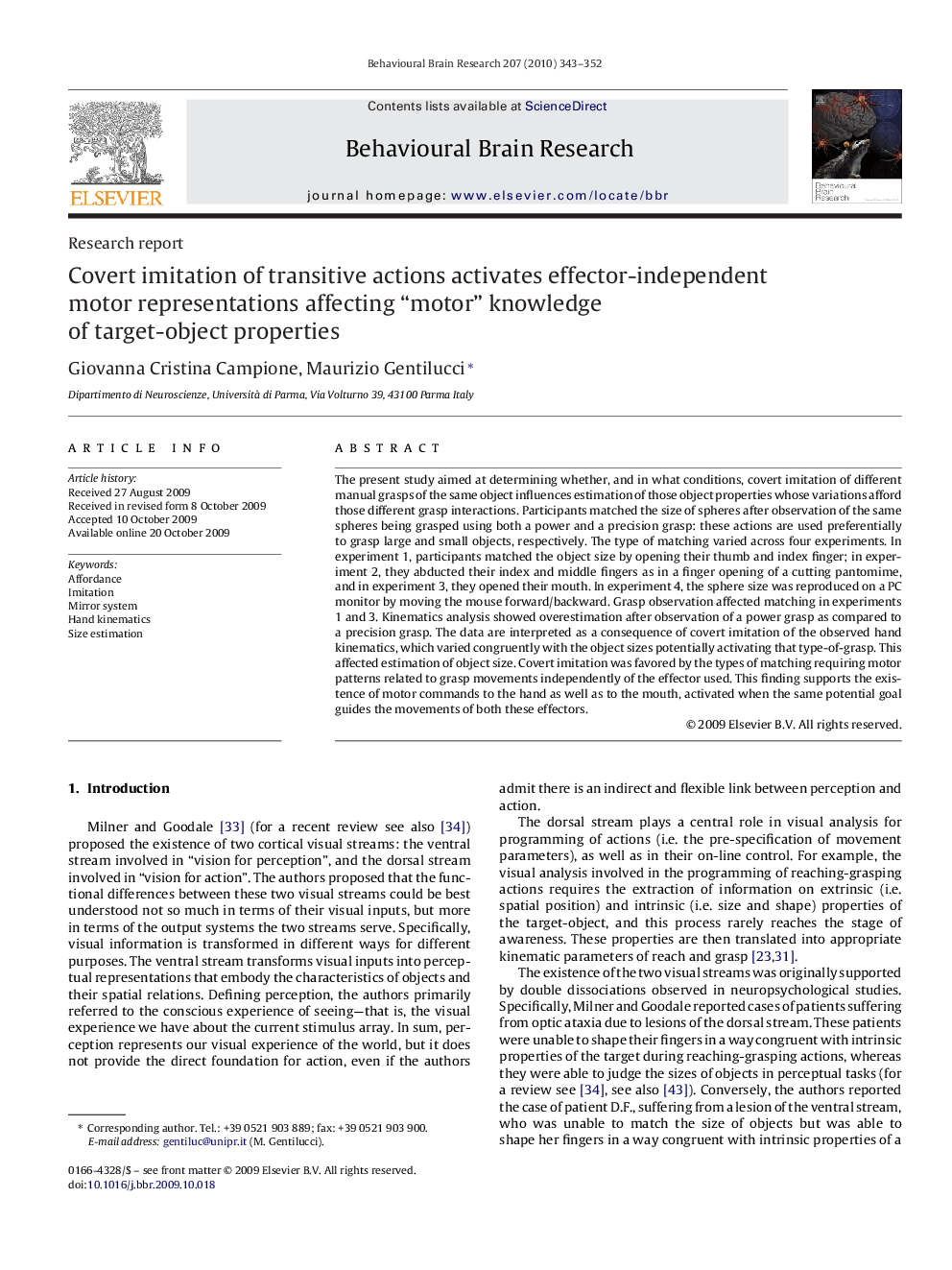| کد مقاله | کد نشریه | سال انتشار | مقاله انگلیسی | نسخه تمام متن |
|---|---|---|---|---|
| 4314475 | 1290038 | 2010 | 10 صفحه PDF | دانلود رایگان |

The present study aimed at determining whether, and in what conditions, covert imitation of different manual grasps of the same object influences estimation of those object properties whose variations afford those different grasp interactions. Participants matched the size of spheres after observation of the same spheres being grasped using both a power and a precision grasp: these actions are used preferentially to grasp large and small objects, respectively. The type of matching varied across four experiments. In experiment 1, participants matched the object size by opening their thumb and index finger; in experiment 2, they abducted their index and middle fingers as in a finger opening of a cutting pantomime, and in experiment 3, they opened their mouth. In experiment 4, the sphere size was reproduced on a PC monitor by moving the mouse forward/backward. Grasp observation affected matching in experiments 1 and 3. Kinematics analysis showed overestimation after observation of a power grasp as compared to a precision grasp. The data are interpreted as a consequence of covert imitation of the observed hand kinematics, which varied congruently with the object sizes potentially activating that type-of-grasp. This affected estimation of object size. Covert imitation was favored by the types of matching requiring motor patterns related to grasp movements independently of the effector used. This finding supports the existence of motor commands to the hand as well as to the mouth, activated when the same potential goal guides the movements of both these effectors.
Journal: Behavioural Brain Research - Volume 207, Issue 2, 5 March 2010, Pages 343–352